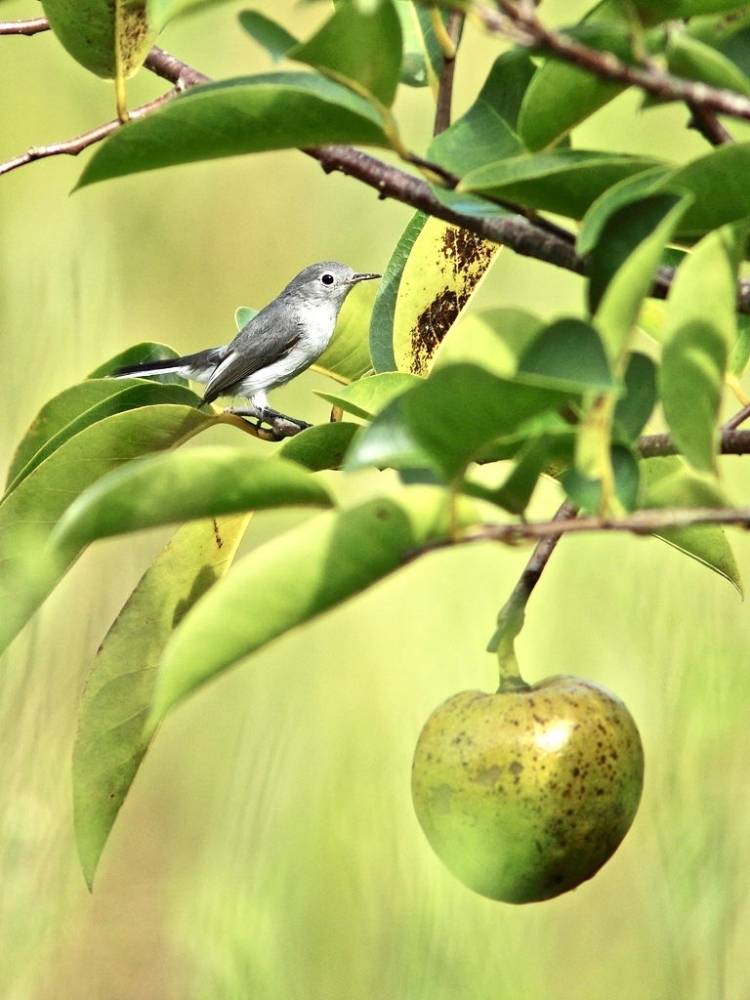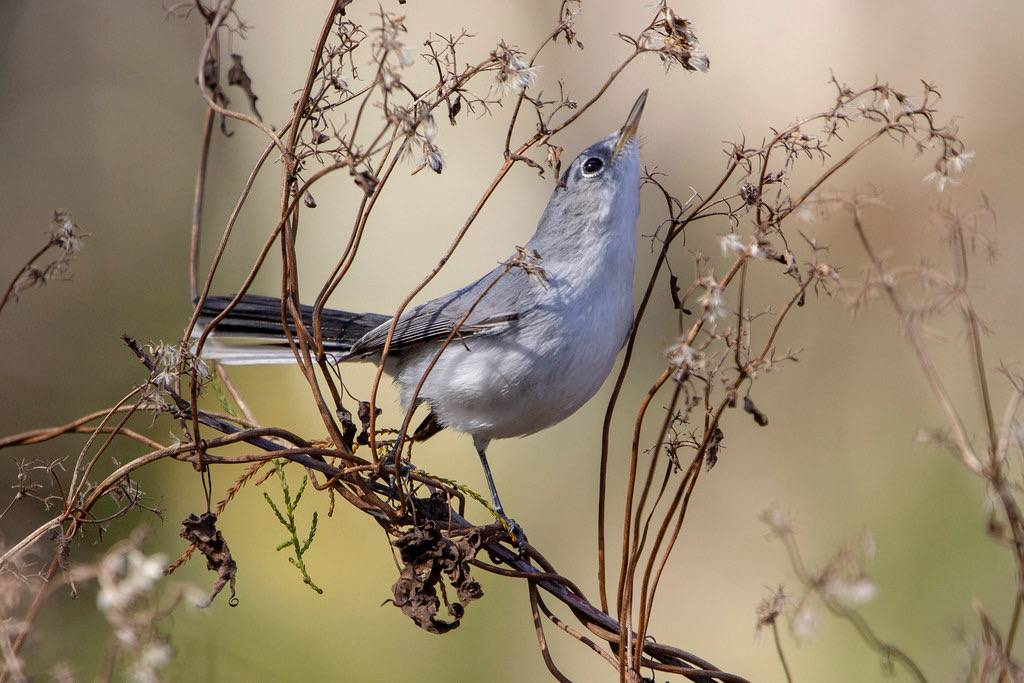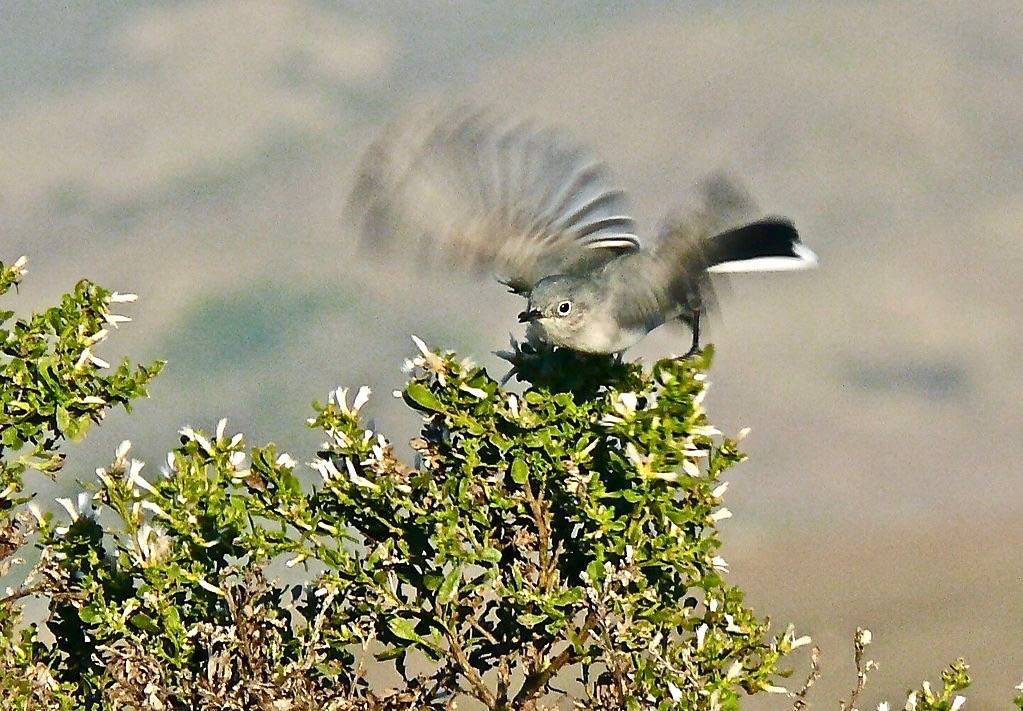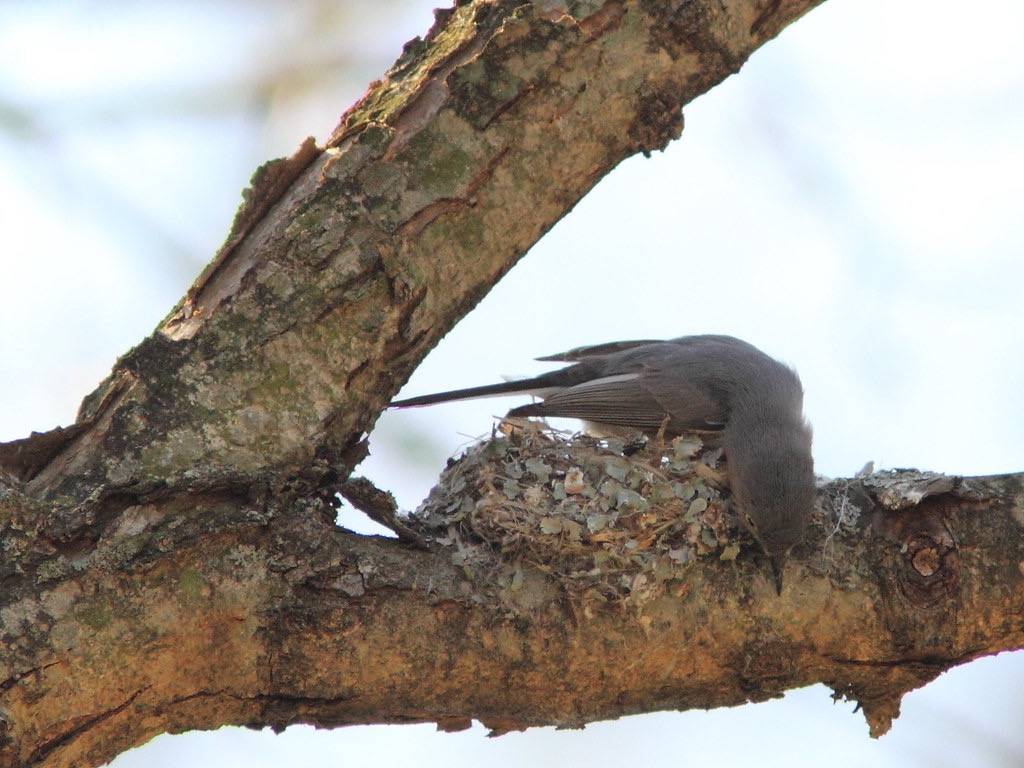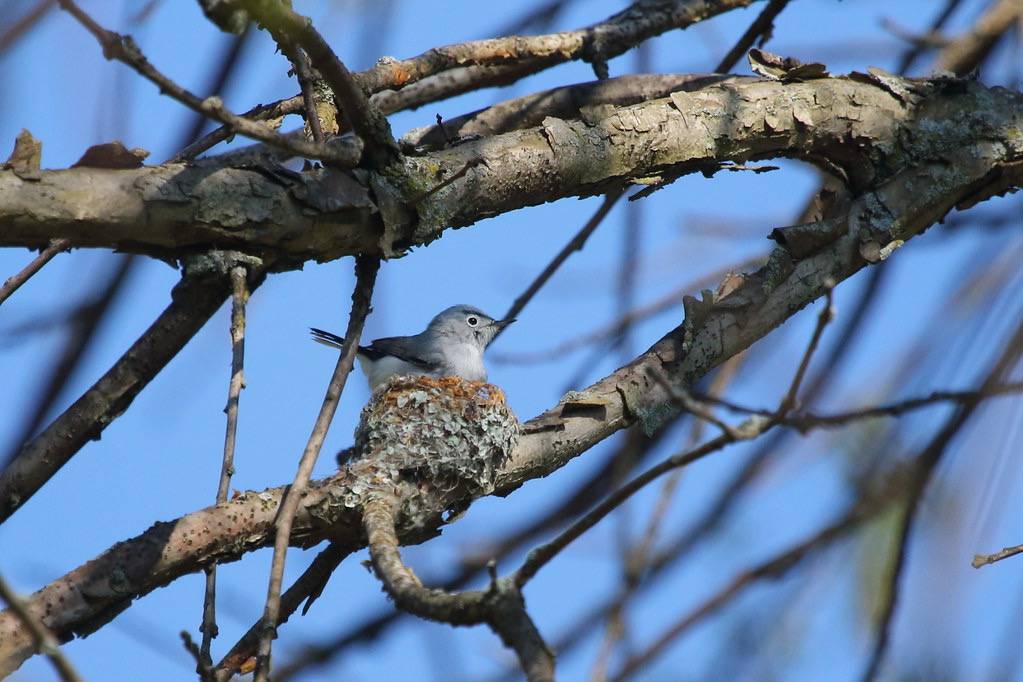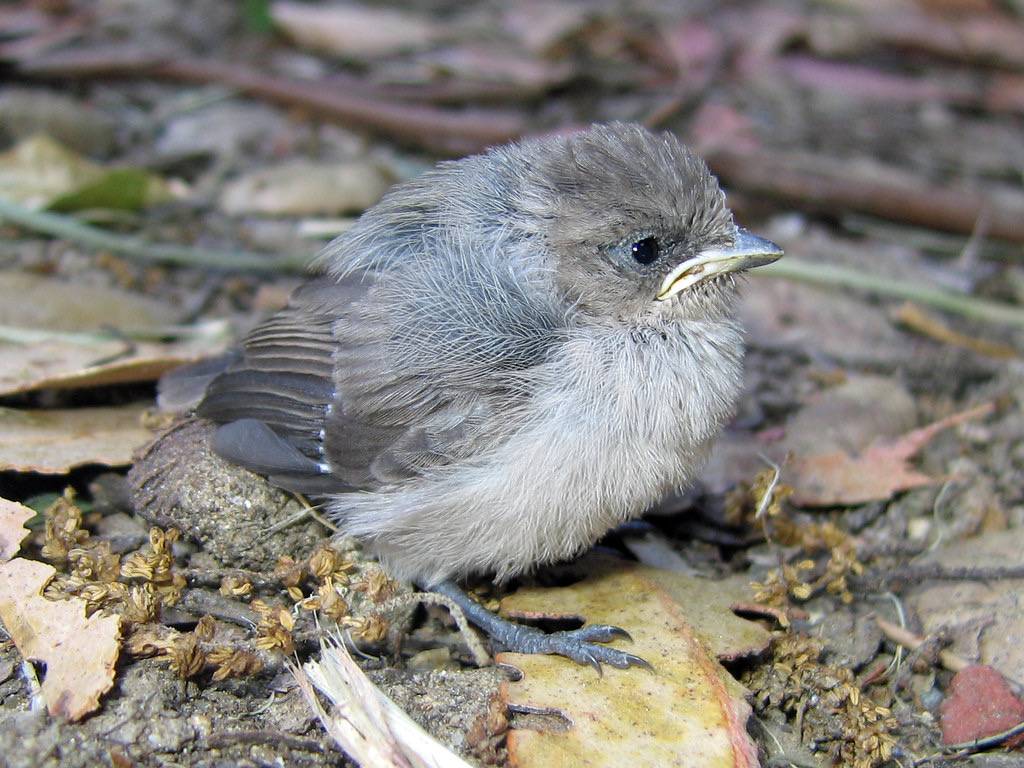Blue-gray Gnatcatcher
The tiny but energetic Blue-gray Gnatcatcher can be seen darting overhead on the edge of upland woods at Salter Grove during spring migration.
It feeds by gleaning small foliage insects or by catching them in flight after flushing them with flicks of its long tail. Much larger insects are also suitable prey and are subdued with blows against branches before consumption. Despite its name, gnats are not an important part of its diet.
The Blue-gray Gnatcatcher is the only gnatcatcher species that is migratory. Other members of the genus are year-round residents in Central and South America. It nests in deciduous woodland and scrubland ranging from southern Mexico northward to southern Ontario.
Since the early part of the 20th century, the boundary of its breeding range in eastern United States has shifted northward by about 200 miles, closely reflecting the pattern of increasing average temperatures. Northern breeders winter in southern United States, Mexico and Central America whereas birds breeding in the southern half of its breeding range are year-round residents.
For more information:
https://www.allaboutbirds.org/guide/Blue-gray_Gnatcatcher
https://www.audubon.org/field-guide/bird/blue-gray-gnatcatcher
https://en.wikipedia.org/wiki/Blue-gray_gnatcatcher
https://www.tn.gov/twra/wildlife/birds/forest-birds/blue-gray-gnatcatcher.html
https://www.thespruce.com/blue-gray-gnatcatcher-385821



